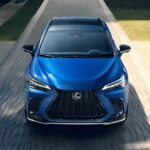Honda is making significant strides in the electric vehicle (EV) market, and the establishment of the Honda Ev Hub in Ohio marks a pivotal moment in this transition. This initiative showcases Honda’s commitment to not only producing electric vehicles but also reimagining its manufacturing processes for a sustainable future. The Ohio EV Hub is designed to be a flexible production center, capable of manufacturing petrol, hybrid-electric, and battery-electric vehicles all on the same production lines, demonstrating Honda’s adaptive approach to the evolving automotive landscape.
At the heart of this transformation is the retooling of Honda’s existing facilities in Ohio, including the Marysville Auto Plant, the East Liberty Auto Plant, and the Anna Engine Plant. This strategic overhaul is not just about adding EV production capacity; it’s about fundamentally rethinking vehicle manufacturing. Honda engineers are focusing on creating human-friendly and environmentally responsible processes, incorporating advanced manufacturing layouts and materials. This approach aims to enhance efficiency, improve quality, and deliver greater value to customers in the electric vehicle segment.
Mike Fischer, executive chief engineer and Honda EV Hub lead, emphasizes that the Ohio EV Hub is setting a new standard for EV production within Honda’s global operations. A key aspect of this reimagining is the implementation of megacasting technology at the Anna Engine Plant. The installation of massive 6,000-ton high-pressure die cast machines is underway to produce the large cases for the Intelligent Power Unit (IPU). These IPU cases, which house the EV battery and form part of the vehicle platform, are significantly larger than any die-cast components Honda has previously manufactured, representing a major advancement in Honda’s manufacturing capabilities.
The Marysville Auto Plant is also undergoing significant changes to accommodate Honda EV production. After consolidating two production lines into one, the plant is preparing for the sub-assembly of the Intelligent Power Unit (IPU). This involves combining battery modules from L-H Battery, Inc., Honda’s joint venture with LG Energy Solution, with the IPU cases from the Anna Engine Plant. This process will create mid- and large-size IPUs for various Honda and Acura EV models that will be produced at the Marysville and East Liberty Auto Plants.
Honda’s transformation extends beyond just equipment upgrades. The company is embracing a philosophy of “simple design, simple manufacturing, and simple logistics.” This approach aims to create high-quality Honda electric vehicles while prioritizing the work environment for associates and maximizing customer value. By simplifying processes on the main production line and optimizing parts delivery and staging, Honda is creating a more efficient and associate-friendly manufacturing environment for Honda EV production.
The Acura Performance EV Concept, which debuted at Monterey Car Week, offers a glimpse into the future of Honda electric vehicles. This concept performance SUV, designed by the Acura Design Studio in Los Angeles, is slated to go into production in late 2025. An all-new Acura model based on this concept will be the first EV engineered on Honda’s new EV platform and the first Honda EV produced at the Marysville Auto Plant, marking a significant milestone for Honda’s electric vehicle program.
Honda’s broader vision is to have battery-electric and fuel cell electric vehicles represent 100% of its vehicle sales by 2040. The Honda EV Hub in Ohio is crucial for achieving this ambitious goal. It serves as a center for developing expertise and experience in EV production that will be shared across Honda’s entire North American manufacturing network. Importantly, Honda is committed to maintaining its current production of internal combustion engine (ICE) and hybrid-electric vehicles to meet ongoing customer demand while simultaneously investing in its electric future. This balanced approach ensures that Honda can fund its EV transition while continuing to serve the diverse needs of the automotive market.
With over 40 years of auto manufacturing in America, starting in 1982 at the Marysville Auto Plant, Honda has deep roots in US production. This new Honda EV Hub in Ohio represents not just an expansion, but a fundamental evolution of Honda’s manufacturing capabilities, positioning the company as a major player in the electric vehicle era. The $4.4 billion investment in the Ohio facilities, including the JV battery plant with LG Energy Solution, underscores Honda’s long-term commitment to electric vehicles and to American manufacturing. As Honda moves towards its 2025 goal of EV production in Ohio, the automotive world watches with anticipation for the next generation of Honda electric vehicles.
